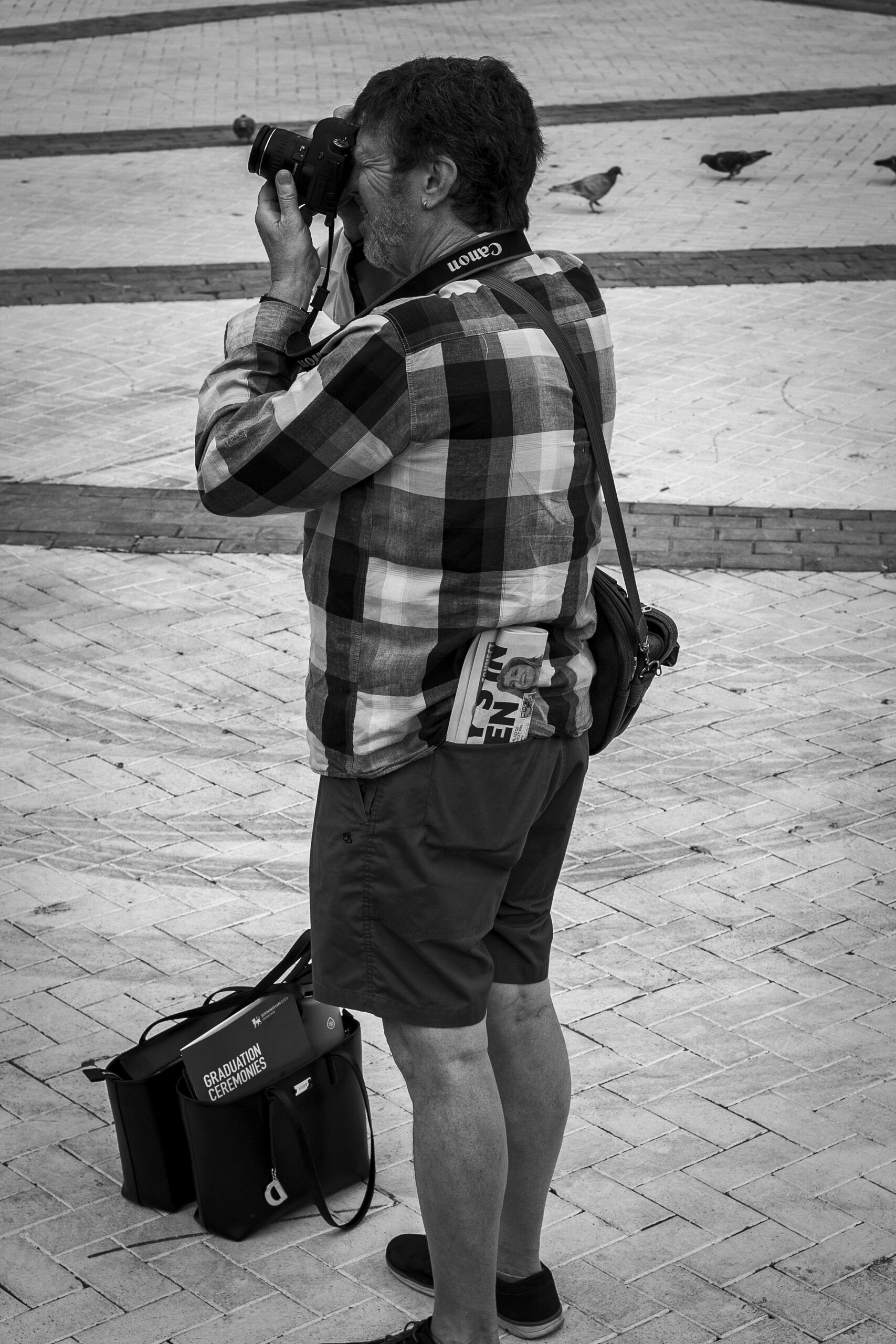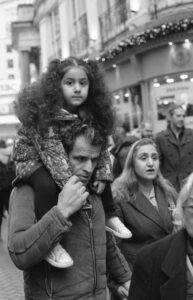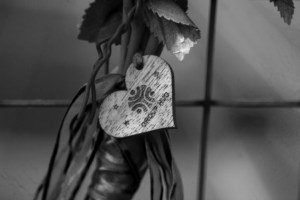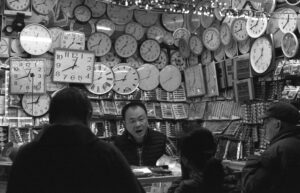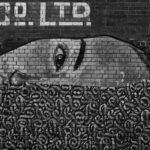Street photography offers some of the most rich and engaging imaging opportunities. Our streets are full of character, personality, action, life and culture. It is arguably one of the most accessible forms of photography – everyone lives somewhere! However, it brings with it a set of concerns, laws and rules that are often misunderstood or interpreted differently by both public and photographers alike. So, who is right and what are you allowed to do within the confines of the law?
In this post:
- Disclaimer
- What’s your opinion?
- The legal angle
- Your moral and ethical compass
- Purpose
- Sources and further reading
Disclaimer
I am not a legal professional, this article does not constitute advice and nor should it be considered a source of fact. Any discussion of the law refers only to the law as it stands in England in 2022 and is my understanding or interpretation of that law according to my own research. If you’re ever in any doubt as to whether you should or should not do something – use your common sense, it’s better not to do something than to go ahead and then have to defend yourself later. Ultimately, owning a camera doesn’t give you the right to behave unacceptably.
What’s your opinion?
That said, let’s start with a seemingly simple question – is it ok to take the following picture?
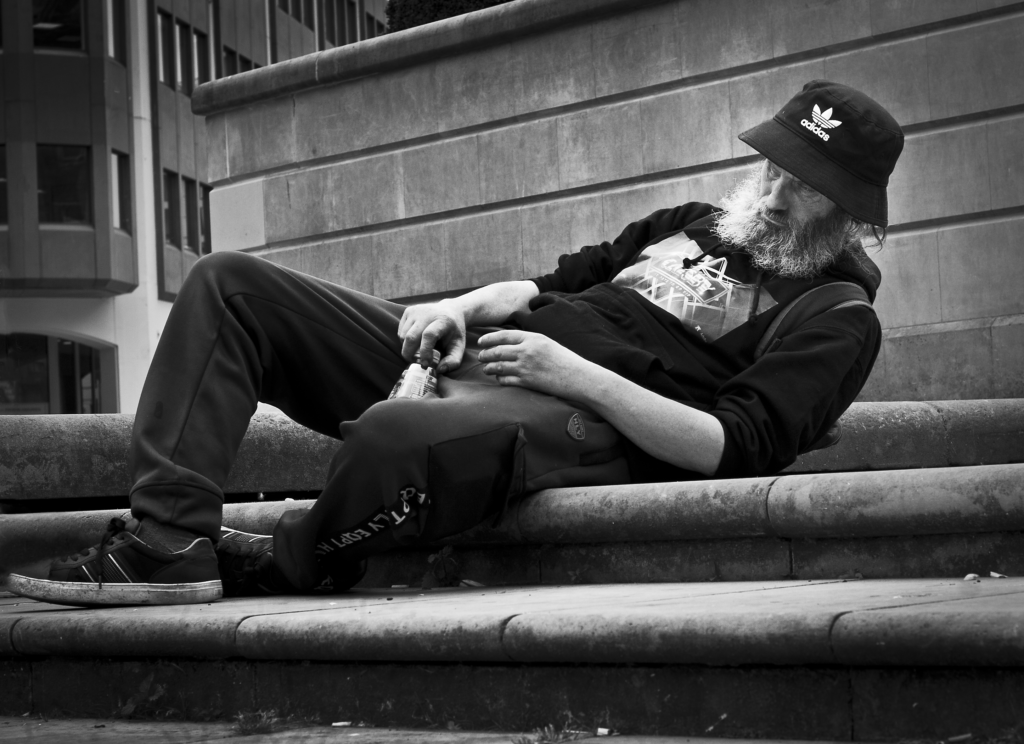
The legal angle
As far as the law is concerned, there is no question that it is entirely legal. Anyone is allowed to take a picture of a person in public, without first gaining their permission to do so. There is a lot of misunderstanding of the law by both photographers and the subjects who find themselves being photographed.
Suppose you are confronted for taking a photograph in the street, where do you stand legally and what are the rights of a photographer and those of your subject?
In England, the law is clear that in a public place there can be no expectation of privacy. By definition, if you are in a public place, it is just that – public! If someone takes a picture of you in the street either intentionally (you are the subject) or unintentionally (you are in the background) then you have absolutely zero recourse to have that photograph deleted, your image removed or any other alteration. The only way in which an image may be removed from your possession is under a warrant.
Indeed, the photographer retains all ownership and copyright of images taken in public places and a subject cannot demand payment, an appearance fee, claim royalties, ask to see the image or state that you need written permission or a model release form to use the image. The only case in which a photographer needs to seek permission is if the image is then specifically to be used for commercial purposes, for example you are about to put their face on the front of your advertising campaign. You are allowed to post the image on social media, your personal website or similar.
The restrictions on photography are equally straightforward. You cannot take an image for the purpose of terrorism, in certain areas of London for commercial purposes without permission, any form of indecent image and you cannot take images in privately owned locations without first seeking permission. To clarify, this includes standing in the street and taking a photograph through a door into someones house or shop. There is an expectation of privacy and you would be potentially invading an individual or organisations privacy if you are poking your telephoto through their window.
This seems all very black and white, but it isn’t so simple as it first appears. For example, if a person objects to you taking their photo in public and you’ve already taken it, you’ve legally done nothing wrong. However, if someone were to object and then you decide to follow them to get the image you wanted then you are obviously harassing that person and that crosses a legal boundary.
I would expect any reasonable individual to think that this is just common sense and courtesy, and having some common decency and not behaving like a creep or trying to hide what you are doing will get you a long way, but the point remains – there is no one law which covers everything. As ever, your behaviour is governed by multiple laws and you have to operate within all of them.
The final, quite surprising, photography legal fact that we need to cover is children. The law in England does not prevent you from taking photographs of children. For obvious reasons this may come as a shock to some people, but there is no specific legal protection for children and photography in public places. The logic behind this could potentially be that it simply wouldn’t be practical to enforce this – for example, how can you prove someone took a photograph of a child, or did so intentionally? It could also have been decided that complexities around children being unintentionally in pictures or the background may cause issues and perhaps around who is legally allowed to photograph a child. I have no idea why this is actually the case – it is pure conjecture.
Personally, I believe this is where things get interesting as there is an obvious cross over here between what is legal and what is ethical.
Your moral and ethical compass
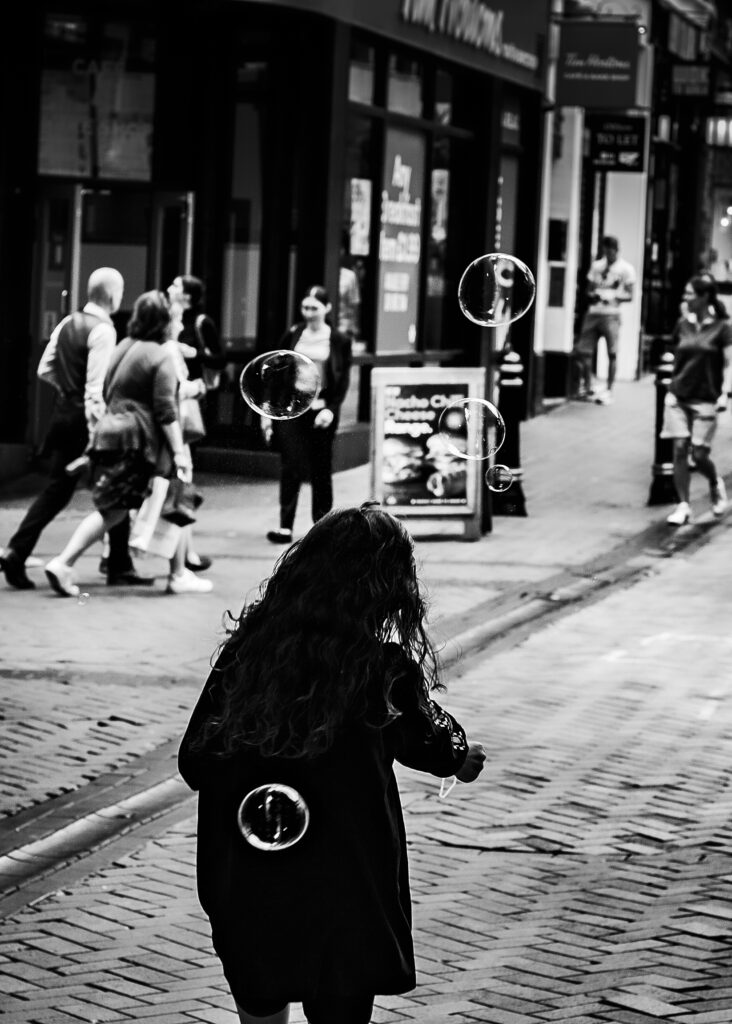
I took the photograph above in Birmingham city centre during a recent test and review of a Canon 300D. You have a split second in the street to spot a potential image and to decide whether or not to take it. My train of thought in this scenario was quite simple, the bubbles caught my eye and it was quite striking, there was something peaceful about it in amongst all the noise and activity that you’d normally find in a large city. The fact the child, at that moment, appeared to not have a care in the world was just a wonderful moment to capture.
I struggled and hesitated with this image before eventually deciding to take the shot. The hesitation comes from a plain and simple moral belief – you have to be careful in any situation when children are involved, especially those that are strangers to you. I knew the law permitted this image to be taken, but it had to sit well with me morally before I actually made that picture happen. My personal deciding factors in this instance were predominantly that she was facing away from me and therefore I wasn’t invading her privacy by making an identifiable image of her and that the subject wasn’t her alone, it was the scene she had created and was part of.
The point here is that just because legally you can do something doesn’t necessarily mean that you should. In England there has been extensive work over the last few decades to provide more and more protection to young and vulnerable people and until I did my homework, I wasn’t aware that the law actually permitted photographing children in public – I had thought it “obvious” that this wouldn’t be allowed. It is absolutely right that we take every measure to protect those who are not capable of protecting themselves and to lay down clear lines in society to set in stone what is acceptable and what isn’t. Where the law does not explicitly provide these protections then it is up to us as decent, moral citizens to do this for ourselves.
The image of the girl blowing bubbles is actually the only street photograph I’ve ever taken with a younger person as a subject and I would have the exact same reservations about doing so again in the future – there has to be a valid and sensible reason, an artistic purpose for you to include children as subjects in your photography.
In our short moral and legal journey we then come full circle to the original question regarding our subject on the concrete steps. What about someone who is clearly an adult, was it ok to take that picture? Do adults command or deserve the same moral consideration as children?
Purpose
A large part of street photography is people. People do incredible things without realising it, have faces which tell a story, dress or behave in unique and interesting ways, happen to coincidentally stand in a way which makes a pattern and so forth. You cannot do street photography without taking pictures of people who occupy those streets, its the very raison d’être of the whole genre.
But people generally don’t like being the subject of a photograph and there are many who would argue (and I think I’m one of them) that a posed image, or one where your subject is aware of what you are doing does not constitute “true” street photography. Therefore, there is almost a necessity to take pictures without permission, without engaging with your subject in order to preserve that moment.
Personally, I think there is a much more genuine message when you capture a moment that is purely natural, which shows what it was that triggered your sense that there is an image to be taken without rather manufacturing a scene you imagined to be interesting. This is not to detract from anyone who does this, all images have their own merits and photography is very personal, we all see it differently.
With the average member of the public being photo averse, there can be a temptation for those just getting into the genre to take pictures of “easier” targets. Inevitably, these are homeless people, buskers and those obviously less fortunate than ourselves. As ever, is it black and white to just say “don’t do this!” Well… no. There are some stunning images of just these subjects, but they are few and far between. Above all else, the successful pictures of these people are those which have purpose – there is a reason that picture needed to be taken.
I think most people would assume that the man on the concrete steps fits into the description of an easy target and this in turn raises that moral flag, so why did I take the picture? Well, there is context to a photograph that is not contained in the frame.
I stood for a while and watched the scene unfold. He was out with a friend of his and both either had or were drinking beer. The subject of our picture was fascinating, he was apparently falling asleep but as he did so he was doing the classic “nodding dog” that children do when they just get so tired that they fall asleep on the spot but then catch themselves, try to rally before the sleep takes over again and the process is repeated.
In his case, he caught the waves of sleep a few times before they appeared to just get stronger and stronger. He started to lie back more and more with each cycle and must have had incredible core strength because he managed to hold himself up in a crunch position for longer and longer – he looked like he was hovering off the ground whilst asleep.
I took the picture more out of sheer admiration and fascination that someone could fall asleep in the exact position recorded in the final image. I promise you he stayed that way for a long time, spark out in his “half way sit up” position. He had a great face for a photo and a great 90’s bucket hat – there’s a lot of small details to take in as far as I’m concerned. Also, I just think the whole image poses a question, and that is “why?” Why is he in that state? Why is he falling asleep, hammered, at about 2 in the afternoon in the middle of Birmingham?
Ultimately, this was another image that I struggled morally with and eventually concluded that there was purpose rather than it just being a mindless snapshot. Every street photographer with an ounce of decency in them will experience these dilemmas over and over again. These judgements and thoughts are impossible to illustrate as they lie in the pictures that are not taken, the situations that are judged to be immoral or just plain wrong to stand there taking pictures of. None of these decisions of whether to press the shutter or not are simple, they lie somewhere on a spectrum which is banded differently from individual to individual.
Behind each image will be a train of thought, a checklist of decency and hopefully, a reason or purpose for that image to exist. If these ingredients are all present then usually, probably you’ll end up erring on the right side of both the law and moral decency.
I considered discussing cultural differences and attitudes to photography but decided this has already gone on long enough and just happens to be an excellent idea for a future discussion! Take care on the streets and remember to do what is right – you don’t need to be a barrister to understand decency.
Sources and further reading
https://www.youtube.com/watch?v=4wl9qr2fARc
https://www.institute-of-photography.com/your-rights-as-a-photographer/
https://en.wikipedia.org/wiki/Photography_and_the_law#United_Kingdom
Share this post:

